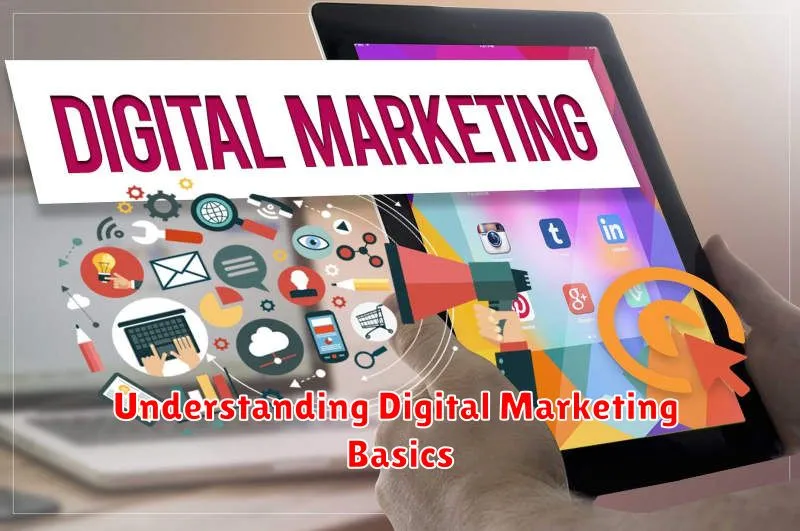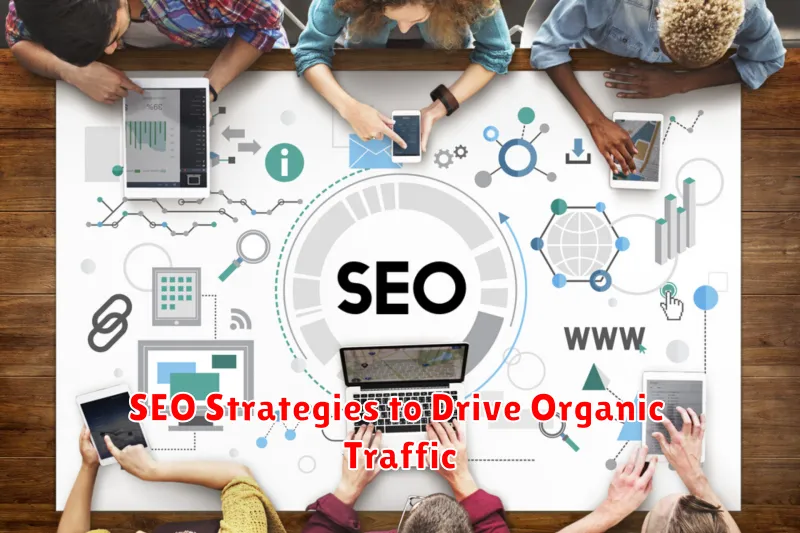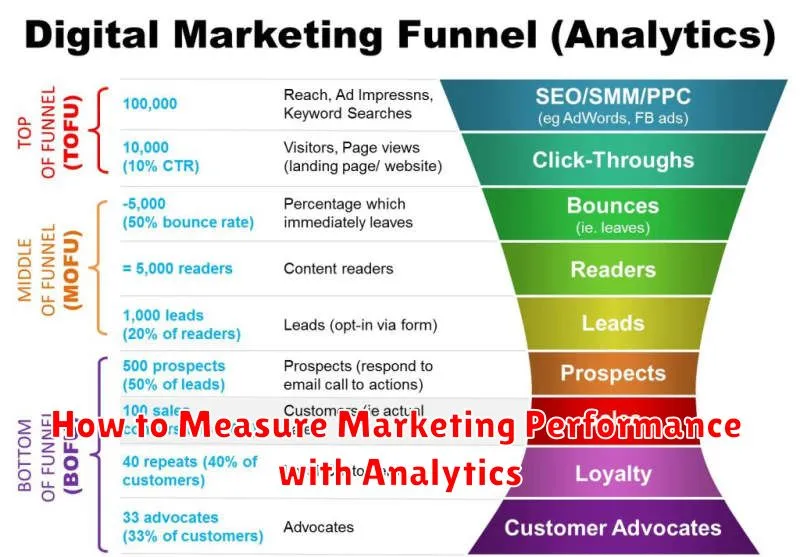In today’s competitive digital landscape, a robust digital marketing strategy is paramount for achieving online business success. This article will explore essential strategies, including search engine optimization (SEO), pay-per-click (PPC) advertising, social media marketing, email marketing, and content marketing, to help your business thrive in the online world. We’ll delve into practical techniques to enhance your brand visibility, drive targeted traffic to your website, and ultimately boost your conversion rates and revenue. Learn how to effectively leverage these powerful tools to achieve your business goals and gain a competitive edge in the digital marketplace.
Understanding Digital Marketing Basics

Digital marketing encompasses all marketing efforts that use an electronic device or the internet. Its core goal is to reach consumers where they are – online.
Key components of digital marketing include: search engine optimization (SEO), which improves organic search rankings; pay-per-click (PPC) advertising, using platforms like Google Ads; social media marketing (SMM), engaging with customers on social networks; email marketing, nurturing leads and building relationships; and content marketing, creating valuable and engaging content to attract and retain customers.
Effective digital marketing requires a strategic approach. It’s crucial to define your target audience, establish clear goals (e.g., increased brand awareness, lead generation, sales), and choose the right channels to reach them. Consistent monitoring and analysis of key metrics are vital to optimize campaigns and achieve desired results.
Understanding the basics of these elements forms the foundation for building a successful online business. Each component plays a vital role in attracting customers, converting leads, and building a strong online presence.
How to Create a Strong Brand Presence Online
Creating a strong online brand presence is crucial for online business success. It involves consistently conveying your brand’s unique value proposition and personality across all digital platforms.
First, define your brand identity. This includes your mission statement, values, target audience, and brand voice. A clear brand identity ensures consistent messaging across all channels.
Next, optimize your website for search engines (SEO) and ensure it’s user-friendly and visually appealing. This is your primary online hub, so it needs to reflect your brand accurately and effectively.
Engage on social media platforms relevant to your target audience. Share high-quality content, interact with your followers, and run targeted advertising campaigns to increase brand awareness and reach.
Build relationships with influencers in your industry to expand your reach and credibility. Collaborating with influencers can introduce your brand to a wider audience.
Finally, consistently monitor your brand mentions online and engage in online reputation management. Addressing customer feedback and proactively managing your online image is essential for maintaining a positive brand perception.
By implementing these strategies, you can build a strong, recognizable, and trustworthy online brand presence, paving the way for sustainable online business success.
SEO Strategies to Drive Organic Traffic

Search Engine Optimization (SEO) is crucial for driving organic traffic to your online business. It involves optimizing your website and content to rank higher in search engine results pages (SERPs).
Keyword research is the foundation of successful SEO. Identify relevant keywords with high search volume and low competition that align with your business offerings. Use these keywords strategically throughout your website content, including titles, headings, and meta descriptions.
On-page optimization focuses on improving elements within your website. This includes optimizing title tags and meta descriptions, using header tags (H1-H6) effectively, and ensuring your content is high-quality, relevant, and engaging. Internal linking between relevant pages is also vital.
Off-page optimization involves building your website’s authority and reputation through external factors. This includes earning high-quality backlinks from reputable websites. Building a strong online presence through social media engagement and creating valuable content that other websites might link to is also beneficial.
Technical SEO addresses the technical aspects of your website to improve search engine crawlability and indexability. This includes ensuring your website loads quickly, is mobile-friendly, and has a clean sitemap. Regularly monitoring your website’s performance with SEO tools is crucial for identifying areas for improvement.
Consistent content marketing is key to attracting organic traffic. Create high-quality, informative, and engaging content that caters to your target audience’s needs and interests. Regularly updating your website with fresh content signals to search engines that your site is active and relevant.
By implementing these SEO strategies, you can significantly improve your website’s visibility, attract more organic traffic, and ultimately achieve online business success.
Using Email Marketing for Customer Retention
Email marketing remains a highly effective tool for retaining customers. By nurturing relationships through targeted email campaigns, businesses can significantly improve customer loyalty and lifetime value.
Personalized email sequences, triggered by specific customer actions (e.g., purchase, abandoned cart), offer relevant content and timely promotions, strengthening engagement. Automated email workflows streamline communication, freeing up time and resources.
Segmented email lists allow for more tailored messaging, ensuring that each customer receives content relevant to their interests and purchasing history. This increases open and click-through rates, fostering stronger connections.
High-quality email content is crucial. Focus on delivering value through informative newsletters, exclusive offers, and personalized recommendations. Avoid overly promotional emails; instead, prioritize building trust and strengthening relationships.
Tracking key metrics, such as open rates, click-through rates, and conversion rates, is essential for evaluating campaign effectiveness and making data-driven improvements. Regularly analyzing these metrics allows for optimization and continuous improvement of email marketing strategies.
Effective email marketing, when executed correctly, is a cost-effective strategy for building strong customer relationships and ultimately boosting customer retention.
How to Run Effective Paid Advertising Campaigns

Effective paid advertising requires a strategic approach. Begin by clearly defining your target audience and their online behavior. Understanding their demographics, interests, and online habits is crucial for effective targeting.
Next, select the right advertising platforms. Consider your target audience’s preferred platforms – whether it’s Google Ads for search engine marketing, social media advertising on platforms like Facebook, Instagram, or LinkedIn, or other specialized platforms.
Craft compelling ad copy that resonates with your target audience. Use strong calls to action and ensure your ads are visually appealing and mobile-friendly. A/B testing different ad variations is key to optimization.
Set a realistic budget and track your key performance indicators (KPIs) closely. Monitor metrics like click-through rate (CTR), conversion rate, and return on ad spend (ROAS) to measure campaign effectiveness and make necessary adjustments.
Finally, continuous optimization is paramount. Regularly analyze your campaign data, refine your targeting, and adjust your bidding strategies to maximize your results. Staying updated on platform updates and best practices is also vital for long-term success.
Social Media Marketing Best Practices
Successful social media marketing requires a strategic approach. Begin by defining your target audience and selecting the platforms where they are most active. A strong brand presence, consistent with your overall marketing strategy, is crucial.
Content is king. Create engaging, high-quality content tailored to each platform. This includes a mix of text, images, and videos. Prioritize authenticity and value over aggressive self-promotion.
Consistency is key. Regular posting keeps your audience engaged and maintains your presence. Develop a content calendar to ensure consistent posting frequency. Utilize relevant hashtags to increase visibility and reach.
Engage with your audience. Respond promptly to comments and messages, fostering a sense of community. Monitor your social media mentions and address any negative feedback professionally. Analyzing your social media analytics is essential for tracking progress, identifying successful strategies, and refining your approach.
Consider incorporating paid social media advertising to extend your reach and target specific demographics. Always align your social media efforts with your broader digital marketing strategy for optimal results.
How to Measure Marketing Performance with Analytics

Measuring marketing performance with analytics is crucial for online business success. Key Performance Indicators (KPIs) provide quantifiable data to assess campaign effectiveness. These metrics vary based on your marketing objectives but commonly include website traffic (using tools like Google Analytics), conversion rates (tracking sales, leads, or sign-ups), and customer acquisition cost (CAC).
Website analytics offer insights into user behavior. Analyzing data like bounce rate, time on site, and pages per visit reveals website usability and content effectiveness. Social media analytics provide data on engagement, reach, and audience demographics. These metrics help optimize content strategy and advertising spend.
Attribution modeling helps determine which marketing channels contribute most to conversions. Last-click attribution, for instance, gives credit to the last touchpoint before a conversion, while multi-touch attribution considers all touchpoints in the customer journey. Choosing the right model depends on your business and marketing goals. By analyzing your data, you can refine your strategies for improved ROI.
Regularly review and analyze your marketing dashboards. This enables data-driven decision-making, allowing you to optimize campaigns, allocate resources effectively, and ultimately achieve your business objectives. Remember that consistent monitoring and data analysis are key to maximizing your marketing return.
Adapting to Changing Market Trends
The digital landscape is in constant flux. Staying ahead requires consistent monitoring and adaptation to evolving market trends. This involves understanding shifts in consumer behavior, technological advancements, and competitive dynamics.
Agile marketing strategies are crucial. This means implementing flexible plans that can be quickly adjusted based on real-time data and market feedback. Regularly analyzing key performance indicators (KPIs) like website traffic, conversion rates, and social media engagement is essential for identifying areas needing improvement.
Embracing new technologies, such as AI-powered tools for marketing automation and personalized content delivery, is vital for maintaining a competitive edge. Furthermore, staying informed about emerging platforms and channels allows businesses to reach new audiences and optimize their reach.
Continuous learning is paramount. Marketers must dedicate time to research, attend industry events, and follow relevant publications to stay updated on the latest trends and best practices. Adaptability and a willingness to experiment are key ingredients for long-term success in the dynamic digital marketing world.

